 W
WCharles Barbier de la Serre was the creator of night writing.
 W
WÉtienne Bazeries was a French military cryptanalyst active between 1890 and the First World War. He is best known for developing the "Bazeries Cylinder", an improved version of Thomas Jefferson's cipher cylinder. It was later refined into the US Army M-94 cipher device. Historian David Kahn describes him as "the great pragmatist of cryptology. His theoretical contributions are negligible, but he was one of the greatest natural cryptanalysts the science has seen."
 W
WArne Carl-August Beurling was a Swedish mathematician and professor of mathematics at Uppsala University (1937–1954) and later at the Institute for Advanced Study in Princeton, New Jersey. Beurling worked extensively in harmonic analysis, complex analysis and potential theory. The "Beurling factorization" helped mathematical scientists to understand the Wold decomposition, and inspired further work on the invariant subspaces of linear operators and operator algebras, e.g. Håkan Hedenmalm's factorization theorem for Bergman spaces.
 W
WHermann Leopold Ludwig Eugen Hans Heinz Bonatz was a German naval officer during World War II. He was most notable for being chief of B-Dienst until January 1944. B-Dienst was Division III Radio Intelligence of the Naval Intelligence Service of the Oberkommando der Marine (OKM). This division dealt with the interception and recording, decoding and analysis of the enemy, in particular British, radio communications.
 W
WMaksymilian Ciężki was the head of the Polish Cipher Bureau's German section (BS–4) in the 1930s, during which time—from December 1932—the Bureau decrypted German Enigma messages.
 W
WWilhelm Fenner was a German cryptanalyst, before and during the time of World War II in the OKW/Chi, the Cipher Department of the High Command of the Wehrmacht, working within the main cryptanalysis group, and entrusted with deciphering enemy message traffic (Cryptography). Wilhelm Fenner was considered an excellent organizer, an anti-Nazi, an anti-Bolshevik and a confirmed Protestant and was known by colleagues as someone who was keen to continue working in cryptology after World War II. To quote military historian David Alvarez:Wilhelm Fenner was the central figure in the evolution of the German Cipher Bureau between 1922 and 1939, and a major personality in the history of German communications intelligence in the interwar period. Under his direction, the Cipher Bureau evolved into a highly professional communications intelligence service, which scored impressive cryptanalytic successes against the diplomatic and military systems of many countries.
 W
WJoseph Finnegan was a United States Navy linguist and cryptanalyst with Station Hypo during the Second World War.
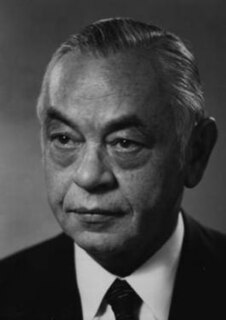 W
WWalter Ernst Fricke was a distinguished German professor of theoretical astronomy at the University of Heidelberg. He was a mathematician and cryptanalyst during World War II at the Wehrmacht signals intelligence agency, Inspectorate 7/VI from 1941 to 1942 (which would later become the General der Nachrichtenaufklärung. In 1942 he was transferred to the OKW/Chi Section IIb. His specialty was the production of codes and ciphers, and the security studies of Army systems. After the war he was director of the Astronomical Calculation Institute in Heidelberg, Germany.
 W
WElizebeth Smith Friedman was an American expert cryptanalyst and author. She has been called "America's first female cryptanalyst".
 W
WMeredith Knox Gardner was an American linguist and codebreaker. Gardner worked in counter-intelligence, decoding Soviet intelligence traffic regarding espionage in the United States, in what came to be known as the Venona project.
 W
WAuguste Kerckhoffs was a Dutch linguist and cryptographer who was professor of languages at the École des Hautes Études Commerciales in Paris in the late 19th century.
 W
WLt. Col. Jan Kowalewski was a Polish cryptologist, intelligence officer, engineer, journalist, military commander, and creator and first head of the Polish Cipher Bureau. He recruited a large staff of cryptologists who broke Soviet military codes and ciphers during the Polish-Soviet War, enabling Poland to weather the war and achieve victory in the 1920 Battle of Warsaw.
 W
WLt. Col. Karol Gwido Langer was, from at least mid-1931, chief of the Polish General Staff's Cipher Bureau, which from December 1932 decrypted Germany's military Enigma-machine ciphers. Poland's prewar achievements paved the way for Britain's World War II Ultra secret.
 W
WAlva Bryan "Red" Lasswell was a United States Marine Corps linguist and cryptanalyst during World War II. In 1942, he contributed to the identification of Midway Atoll as the Japanese military target codenamed AF. In April 1943, Lasswell helped decrypt the coded itinerary of Admiral Isoroku Yamamoto, leading to his interception by Army Air Forces fighter planes near Rabaul.
 W
WLeopold Samuel Marks, was an English writer, screenwriter, and cryptographer. During the Second World War he headed the codes office supporting resistance agents in occupied Europe for the secret Special Operations Executive organisation. After the war, Marks became a playwright and screenwriter, writing scripts that frequently utilised his war-time cryptographic experiences. He wrote the script for Peeping Tom, the controversial film directed by Michael Powell which had a disastrous effect on Powell's career, but was later described by Martin Scorsese as a masterpiece. In 1998, towards the end of his life, Marks published a personal history of his experiences during the war, Between Silk and Cyanide, which was critical of the leadership of SOE.
 W
WJoseph Oswald Mauborgne co-invented the one-time pad with Gilbert Vernam of Bell Labs. In 1914 he published the first recorded solution of the Playfair cipher. Mauborgne became a Major General in the United States Army, and from October 1937 to his retirement in 1941 was the Army's 12th Chief Signal Officer, in command of the Signal Corps.
 W
WGeorges Jean Painvin was a French cryptanalyst during the First World War. His most notable achievement was the breaking of the ADFGVX cipher in June 1918.
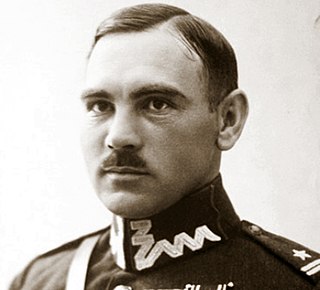 W
WMajor Franciszek Pokorny was a Polish Army officer who, after World War I, headed the Polish General Staff's Cipher Bureau before Major Gwido Langer.
 W
WHermann Pokorny was a World War I Austro-Hungarian Army cryptologist whose work with Russian ciphers contributed substantially to Central Powers victories over Russia. He was a member of the Hungarian Order of Vitéz.
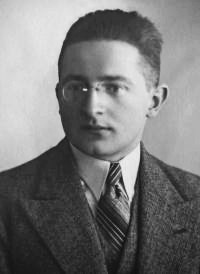 W
WMarian Adam Rejewski was a Polish mathematician and cryptologist who in late 1932 reconstructed the sight-unseen German military Enigma cipher machine, aided by limited documents obtained by French military intelligence. Over the next nearly seven years, Rejewski and fellow mathematician-cryptologists Jerzy Różycki and Henryk Zygalski developed and used techniques and equipment to decrypt the German machine ciphers, even as the Germans introduced modifications to their equipment and encryption procedures. Five weeks before the outbreak of World War II the Poles, at a conference in Warsaw, shared their achievements with the French and British, thus enabling Britain to begin reading German Enigma-encrypted messages, seven years after Rejewski's original reconstruction of the machine. The intelligence that was gained by the British from Enigma decrypts formed part of what was code-named Ultra and contributed—perhaps decisively—to the defeat of Germany.
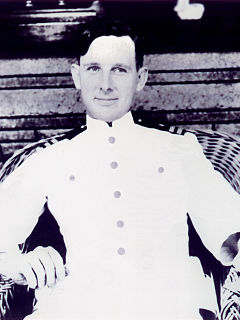 W
WJoseph John Rochefort was an American naval officer and cryptanalyst. He was a major figure in the United States Navy's cryptographic and intelligence operations from 1925 to 1946, particularly in the Battle of Midway. His contributions and those of his team were pivotal to victory in the Pacific War.
 W
WJerzy Witold Różycki was a Polish mathematician and cryptologist who worked at breaking German Enigma-machine ciphers before and during World War II.
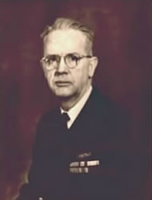 W
WCaptain, U.S.N. Laurance Frye Safford was a U.S. Navy cryptologist. He established the Naval cryptologic organization after World War I, and headed the effort more or less constantly until shortly after the Japanese attack on Pearl Harbor. His identification with the Naval effort was so close that he was the Friedman of the Navy.
 W
WGeneral Sir George Scovell, was a member of the quartermaster's staff of the British Army in Iberia during the Peninsular War.
 W
WClaude Elwood Shannon was an American mathematician, electrical engineer, and cryptographer known as "the father of information theory". Shannon is noted for having founded information theory with a landmark paper, "A Mathematical Theory of Communication", which he published in 1948.
 W
WOliver Strachey CBE, a British civil servant in the Foreign Office, was a cryptographer from World War I to World War II.
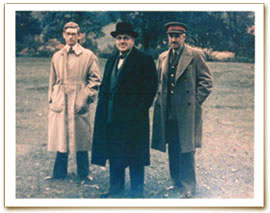 W
WBrigadier John Hessell Tiltman, was a British Army officer who worked in intelligence, often at or with the Government Code and Cypher School (GC&CS) starting in the 1920s. His intelligence work was largely connected with cryptography, and he showed exceptional skill at cryptanalysis. His work in association with Bill Tutte on the cryptanalysis of the Lorenz cipher, the German teleprinter cipher, called "Tunny" at Bletchley Park, led to breakthroughs in attack methods on the code, without a computer. It was to exploit those methods, at extremely high speed with great reliability, that Colossus, the first digital programmable electronic computer, was designed and built.
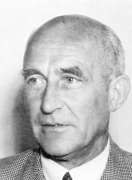 W
WWilhelm Tranow was a very successful German cryptanalyst, who before and during World War II worked in the monitoring service of the German Navy and was responsible for breaking a number of encrypted radio communication systems, particularly the Naval Cypher, which was used by the British Admiralty for encrypting operational signals and the Naval Code for encrypting administrative signals. Tranow was considered one of the most important cryptanalysts of B-service. He was described as being experienced and energetic. Little was known about his personal life, when and where he was born, or where he died.
 W
WSir Charles Wheatstone FRS FRSE DCL LLD, was an English scientist and inventor of many scientific breakthroughs of the Victorian era, including the English concertina, the stereoscope, and the Playfair cipher. However, Wheatstone is best known for his contributions in the development of the Wheatstone bridge, originally invented by Samuel Hunter Christie, which is used to measure an unknown electrical resistance, and as a major figure in the development of telegraphy.
 W
WHerbert Osborn Yardley was an American cryptologist. He founded and led the cryptographic organization the Black Chamber. Under Yardley, the cryptanalysts of The American Black Chamber broke Japanese diplomatic codes and were able to furnish American negotiators with significant information during the Washington Naval Conference of 1921-1922. Recipient of the Distinguished Service Medal. He wrote The American Black Chamber (1931) about his experiences there. He later helped the Nationalists in China (1938–1940) to break Japanese codes. Following his work in China, Yardley worked briefly for the Canadian government, helping it set up a cryptological section of the National Research Council of Canada from June to December 1941. Yardley was reportedly let go due to pressure either from the Secretary of War Henry L. Stimson or from the British.
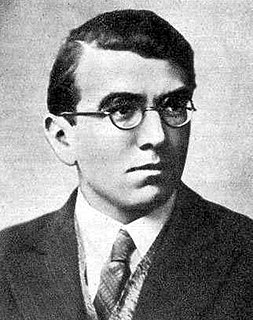 W
WHenryk Zygalski was a Polish mathematician and cryptologist who worked at breaking German Enigma ciphers before and during World War II.